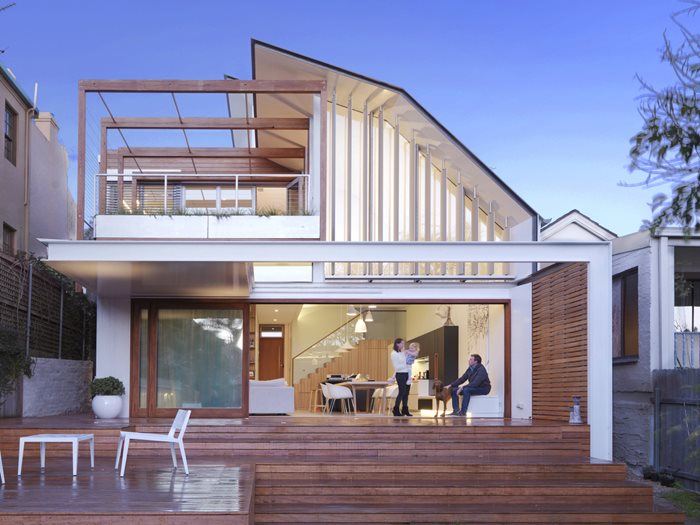

Waverley House: Smart, sustainable climate-sensitive design
Waverley House is a smart, sustainable family home designed to be climate-sensitive through a combination of passive and active design measures.

Waverley House is a smart, sustainable family home designed to be climate-sensitive through a combination of passive and active design measures.
With one half of the client couple hailing from the UK, the brief for a new house was clear. The clients wanted a light-filled, comfortable family home, with easy access to the backyard, and thermal performance that would minimise reliance on artificial heating and cooling year-round.
Thermal modelling proved a combination of passive and active design measures could achieve an 8-star performance rating. And all of this in a two-storey residence where the living zone would need to face the hot afternoon sun.

To address significant overshadowing from a neighbour to the north, the architect proposed a light-seeking, two-storey form with a bright, full-height living room void. In a neighbourly response, the architect designed a slanted, folding roof to the south, maximising light for those in shadow on the opposite boundary. On hot afternoons, temperature-triggered, computerised louvres were designed to adjust automatically, screening the void to help cool the entire home. In the event of rain, a moving roof form above the terrace can be deployed remotely via a smartphone or personal device.

Thermally broken, low-e windows were a cost-effective eco-friendly architecture measure for high thermal performance throughout the home, and air quality was considered, too, with low Volatile Organic Compound (VOC) finishes throughout.
Solar-powered, hydronic, underfloor heating adds extra warmth to this home’s hub in winter but this is rarely needed. The concrete floor’s thermal mass, combined with the building’s reverse brick veneer construction means indoor temperatures remain stable in all but the most extreme of weather conditions, even without eaves or overhangs.



